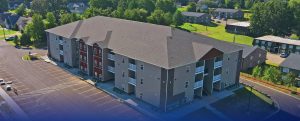Multifamily Market Update: Strategies + Fundamentals
Economic uncertainty is still a huge question that will most likely remain throughout the year. In the month of May, the Ten-year treasury hit three percent for the first time since 2009. Inflation is still rising; the last reported value was 8.5 percent. The country’s gross domestic product shrank at an annualized rate of 1.4 percent through the first quarter of the year, which was caused by multiple temporary factors; however, this still impacts today’s market.
Apartment markets tightened for the fifth straight month, and investors are worried that the rising interest rates will have a negative impact on the housing market and put out the figurative “fire” in the housing market that has been so strong for the past year. Even as rent growth and occupancy remain elevated, developers struggle to build more housing due to the increasing cost of materials, a lack of available labor, and the increasing cost of capital because of rising interest rates.
Fundamentals of the Multifamily Market
Multifamily has four key characteristics that make it feasible and attractive for investors in the current market.
- Necessity: Everyone needs a place to live. Renters and owners are likely to prioritize their housing costs in times of economic distress. This can be seen during the height of the pandemic when multifamily occupancy levels stayed relatively stable when compared to offices or certain types of retail properties.
- Affordability: Multifamily units are easier for many families and individuals to get into compared to the single-family housing market, especially when it comes to cost. As the prices for single-family homes continue to be at an all-time high and overwhelmingly outweigh wage increases, they become less and less affordable.
- Efficiency: Real estate investors like the scale and efficiency of owning a multifamily property. All the units are in one place, making leasing, repairs, and property management more accessible and cost-effective.
- Liquidity: Multifamily properties are always subject to high demand from individual and institutional real estate investors because of the degree of liquidity compared to other property types.
Why History Shows Positive Outlook for Multifamily
Economic hardship and recessionary times come and go, but they can inflict long-lasting damage to investment portfolios and cause overwhelming emotional stress to investors. However, for those armed with information, real long-term investment opportunities are available. For decades, people have invested in apartments for tax advantages, passive income, equity growth, diversification, and stability.
The evidence is overwhelming when you examine multifamily real estate’s performance during previous recessions. The inherent return components of current income, income growth, compelling risk-adjusted returns, and lower volatility can provide strong overall performance in good times and bad.
It’s important to remember that, at its core, an investment in multifamily real estate is an investment in the basic need for shelter. It joins food staples as one of the last two expenses people forego during times of severe economic stress.
Faced with the threat of homelessness, individuals will surrender entertainment, luxuries, restaurants, travel, and so much more to keep a roof over their heads. So, it’s not surprising that multifamily has outperformed other commercial real estate types during past recessions.









